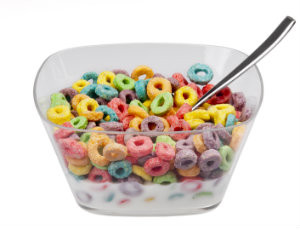Why Do Breakfast Cereals Cost So Much?
Breakfast, which is one of the most important meals of the day, may be costly. In most circumstances, the quality of your breakfast will determine how your day will go. Breakfast can consist of a wide range of options. People nowadays choose a breakfast choice that is simple and quick to make, especially in a world where time is of the utmost. Cereals for breakfast is one such choice. Recent studies, on the other hand, show that individuals are eating fewer cereals. One of the reasons for this is their cost. You may have noticed the high pricing of cereals when strolling through the supermarket’s cereal aisle.
A Look Into Breakfast Cereals Price Points
So what has led to this development? Following are possible reasons why breakfast cereals costs so much:
- Compensation for a volume reduction. Cereal consumption has been dropping in recent years, resulting in fewer cereals being offered. You may have also seen a trend toward individuals drinking less milk and eating less carbs, whether for health reasons or not. Parents are increasingly opting to feed their children meals that are lower in sugar. As a result of all of this, fewer grains are sold. To compensate for this decrease, cereal makers have raised their prices in order to retain profit margins.

- Climate change is a reality. Many people miss the indirect consequences of climate change. Many individuals are unable to see the link between grains and climate change. Climate change has had a substantial impact on the essential ingredients needed to create popular cereals, such as rice, wheat, and corn. Their yields have decreased as a result of the high temperatures in the places where they are grown. As a result, it’s easy to see why farmers must raise the prices at which they sell their products to manufacturers. They must also compensate for the losses. This boosts the cost of manufacturing in general, and hence the price of grains in supermarkets.
- The price of oil. You’ve probably heard on the internet that the price of oil is constantly increasing with each passing day. The cost of production has also increased as a result of this. The amount of gasoline used to move raw materials from the source region to factories and mills, then from the Miller to wholesale and retail distributors till they arrive at the store in your neighborhood is significant. Fuel is used by the Millers as well. This often raises the amount of money spent on cereal production, which is then recovered by raising cereal prices.
- Demands from customers. This is particularly prevalent in cereals aimed primarily towards children. The cereals must be made appealing to youngsters, according to buyers, who are primarily parents. This may be accomplished by putting games on the packaging or including games or presents in the cereal boxes. All of this is not without cost. It needs to be accounted for in some way.
- Packaging has been updated. Cereal makers have devised a scheme to deceive consumers into spending more money on their products. They’ve created new packets that are larger than the previous ones while keeping the same amount of material. Because most buyers assume that larger is better, prices have also been raised. The content of the smaller and medium-sized boxed cereals has also been lowered, although the pricing have remained same.
Who Is Dictating The Cereal Price?
The monopoly of the main producers is also one of the key reasons why cereal prices are growing. Because there is no competition, the huge cereal corporations can set whatever pricing they choose.
The only disadvantage of the trend is that it will continue indefinitely. It’s likely that the price will continue to rise. But, not to end on a downer, homemade cereal alternatives appear to be on the rise as individuals share their own homemade cereal recipes.







